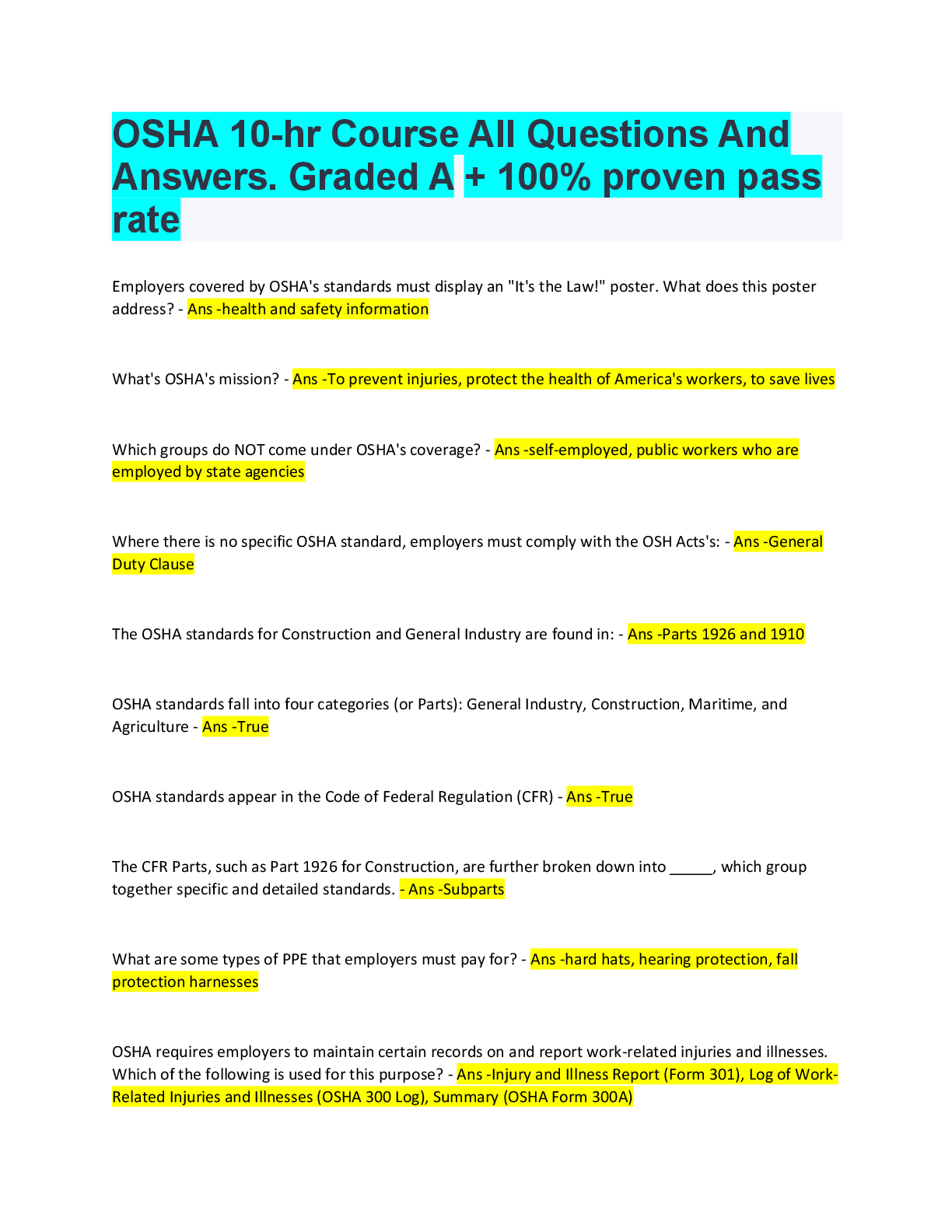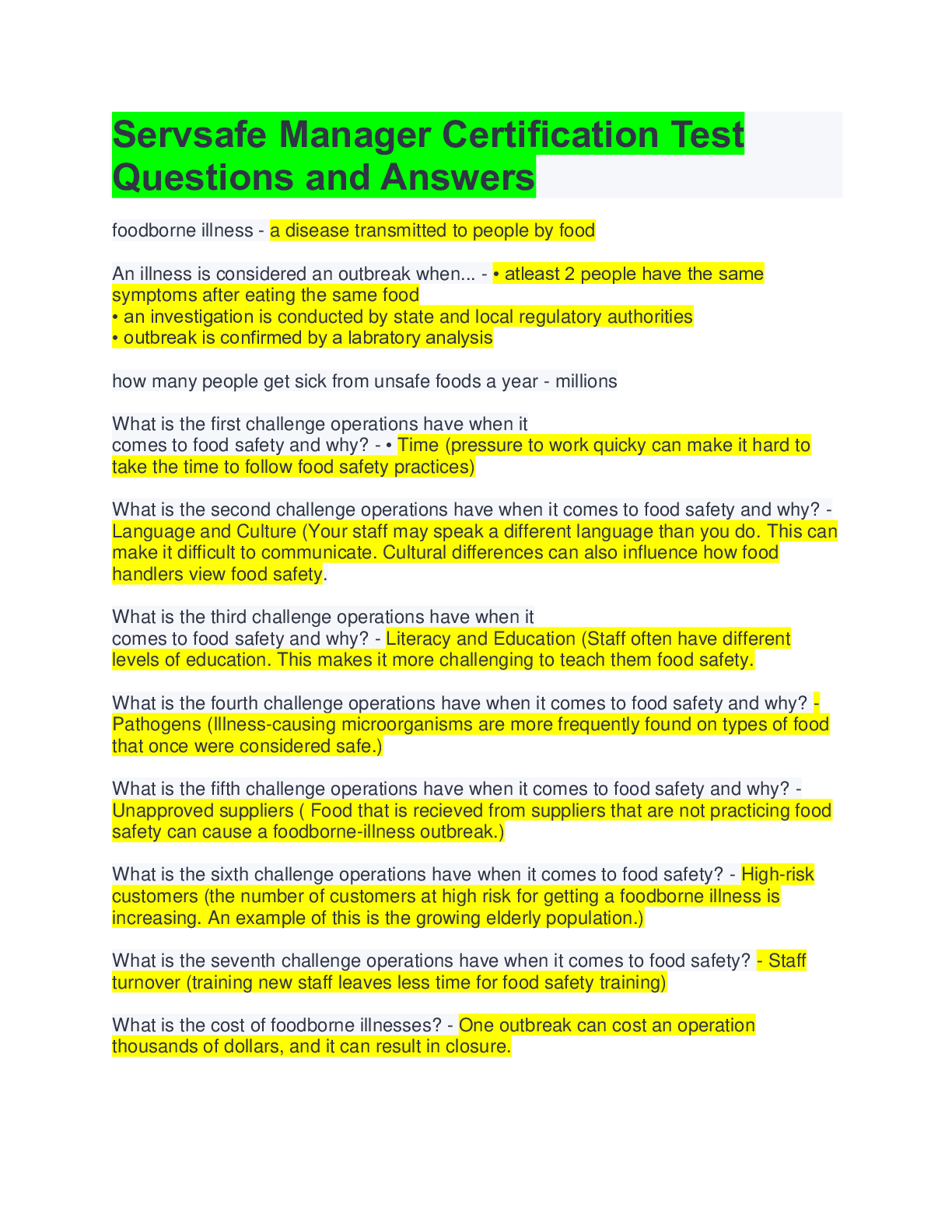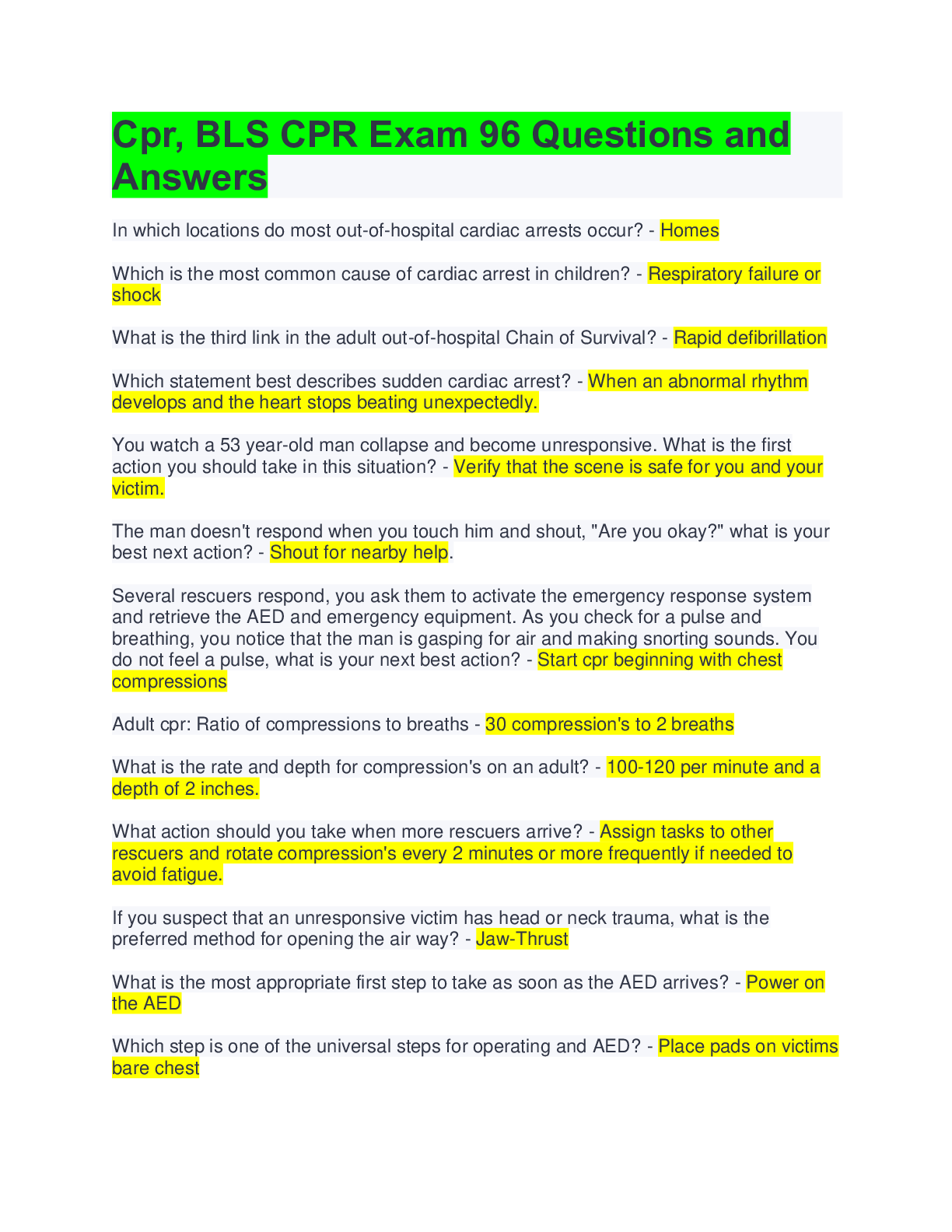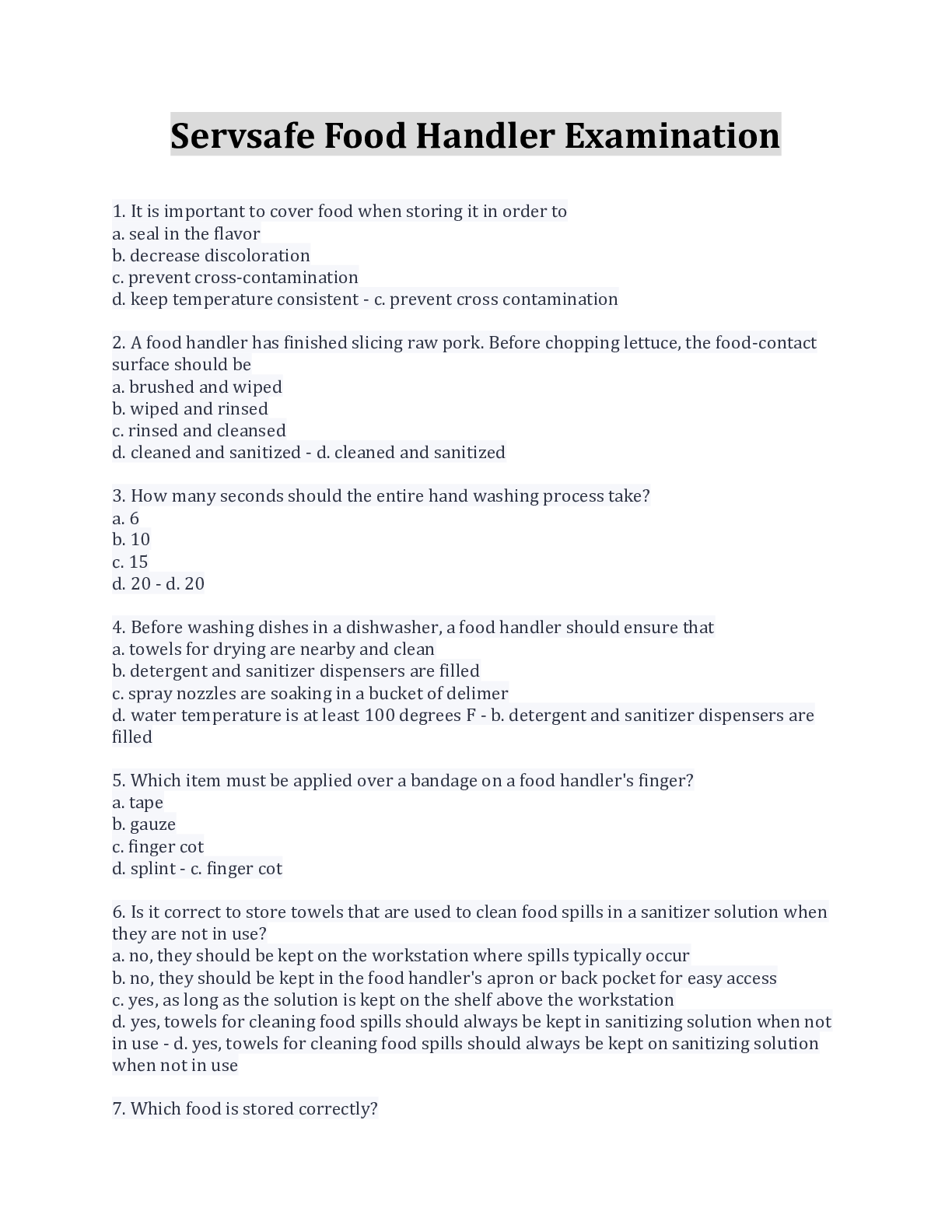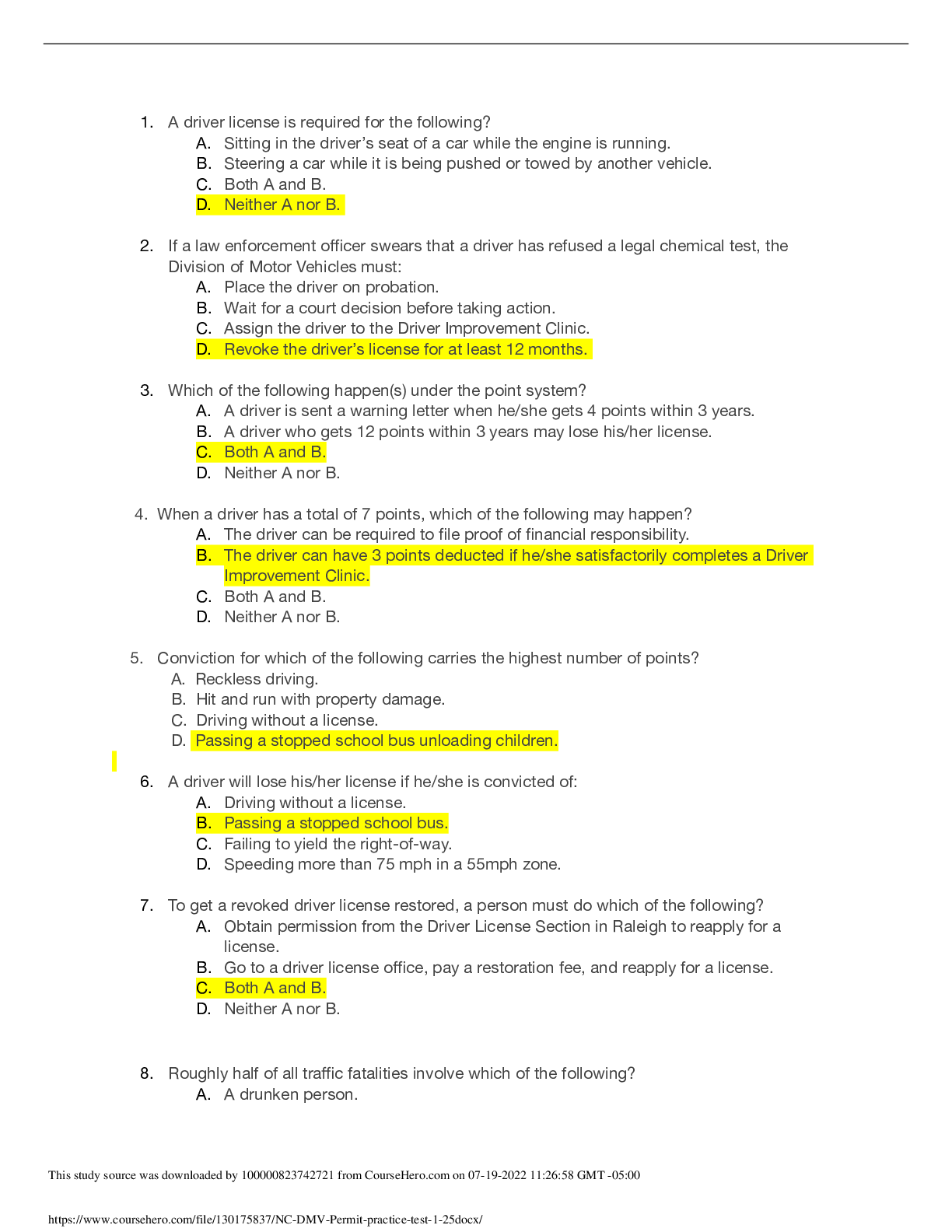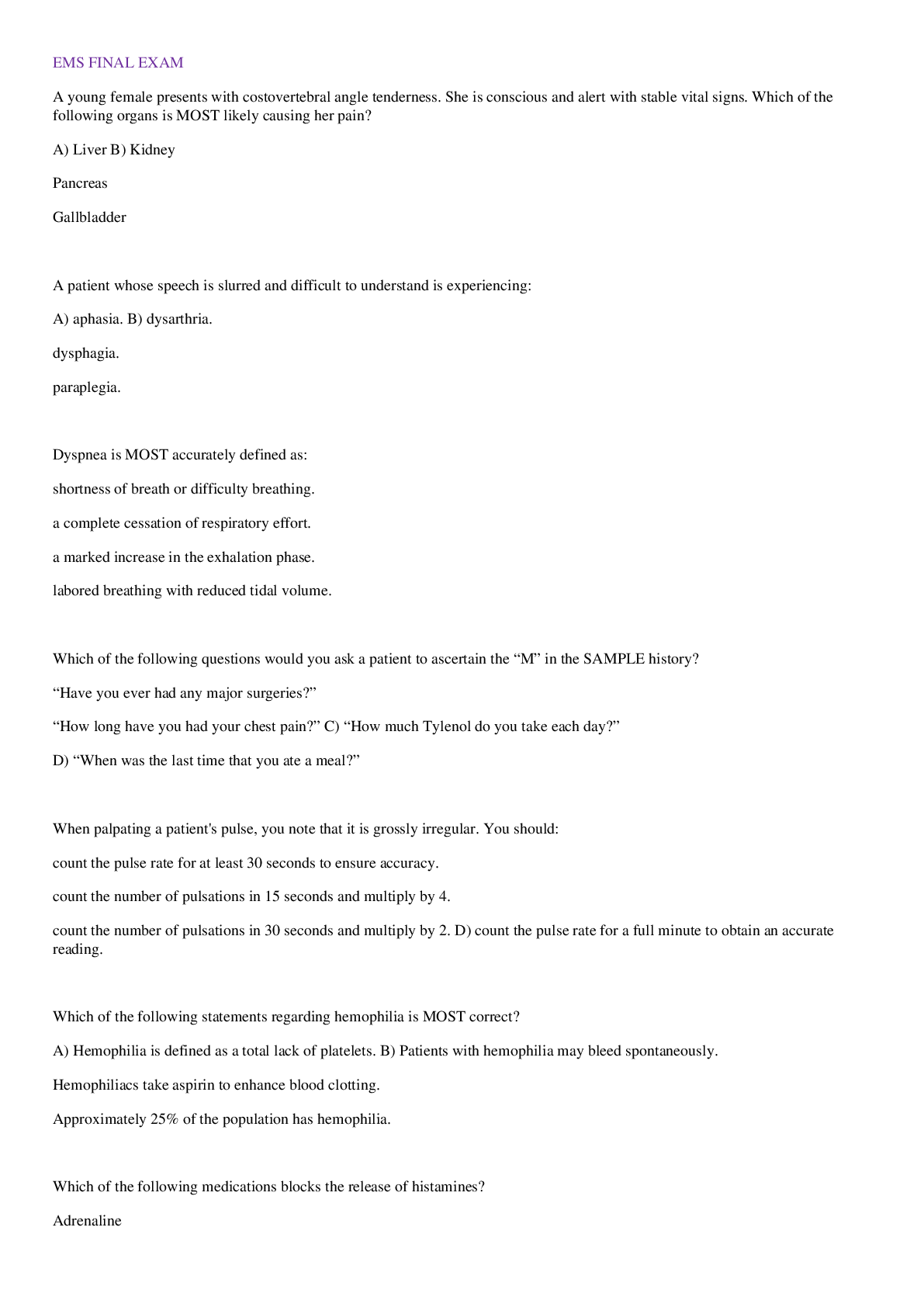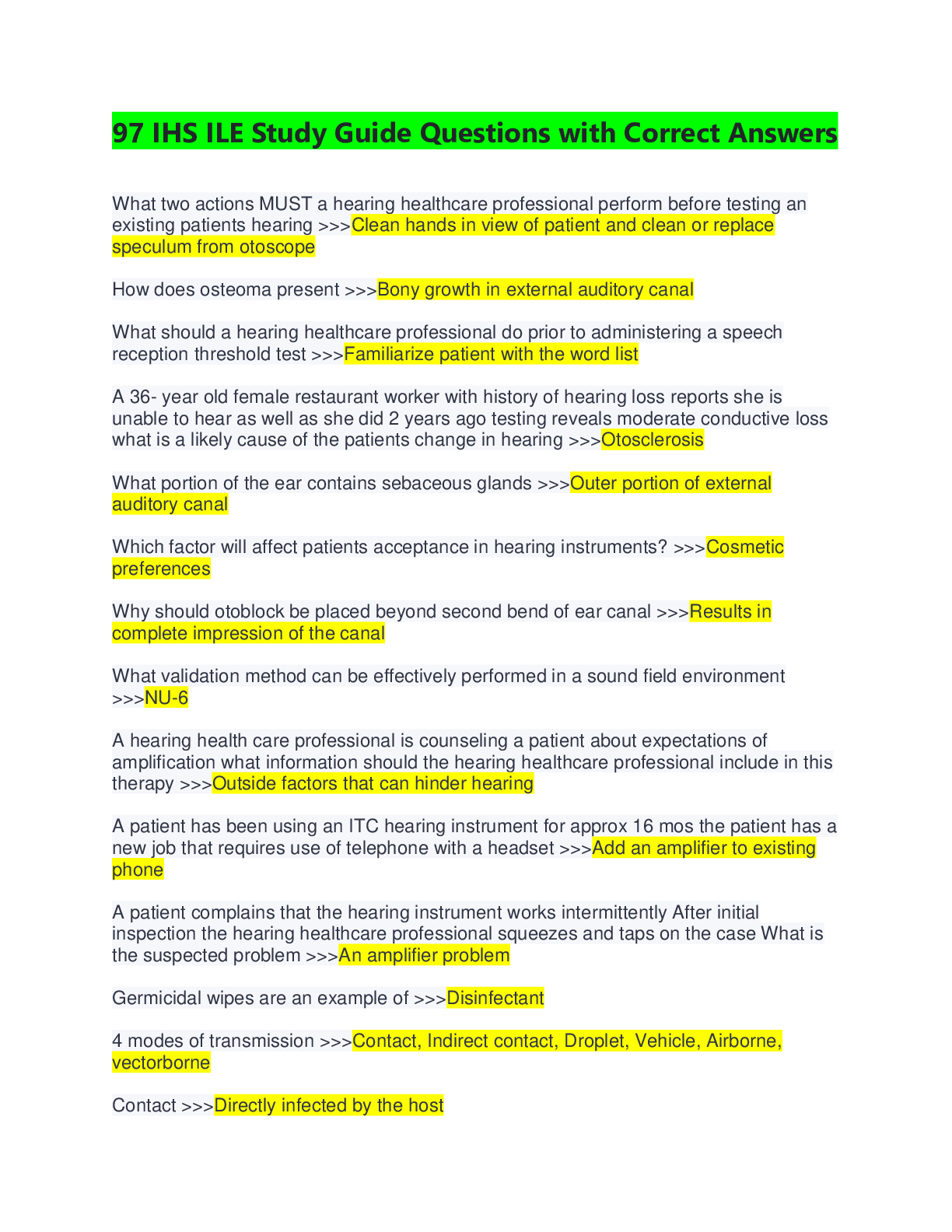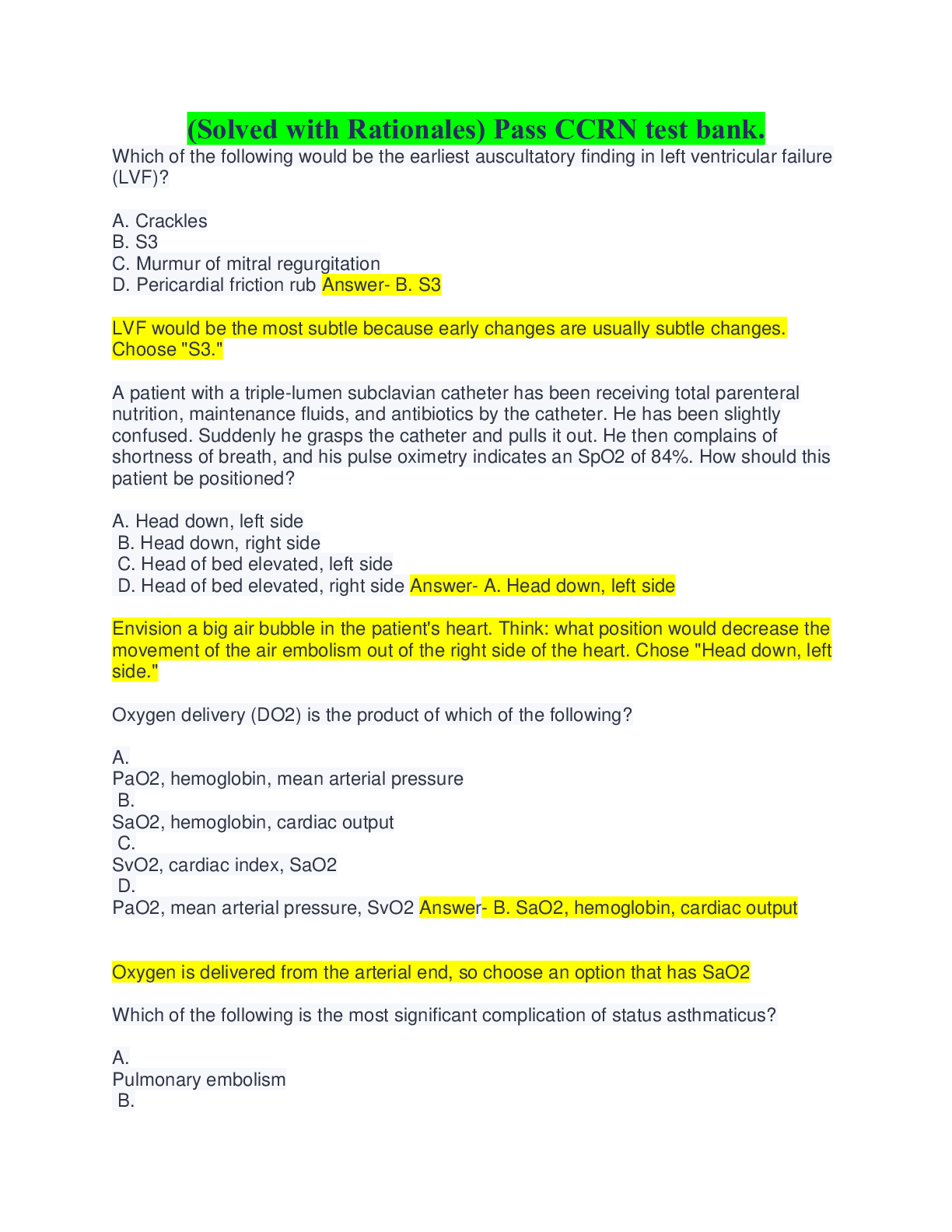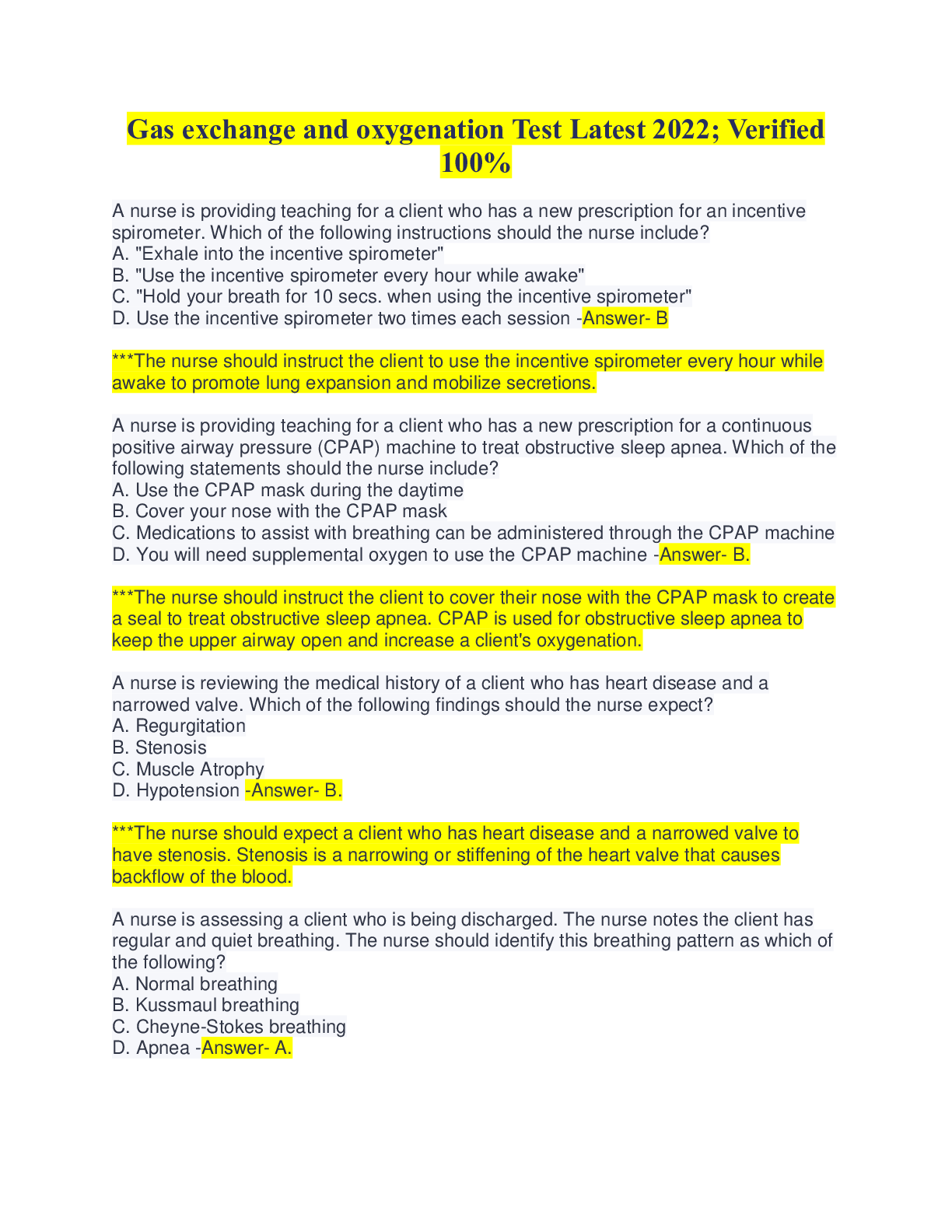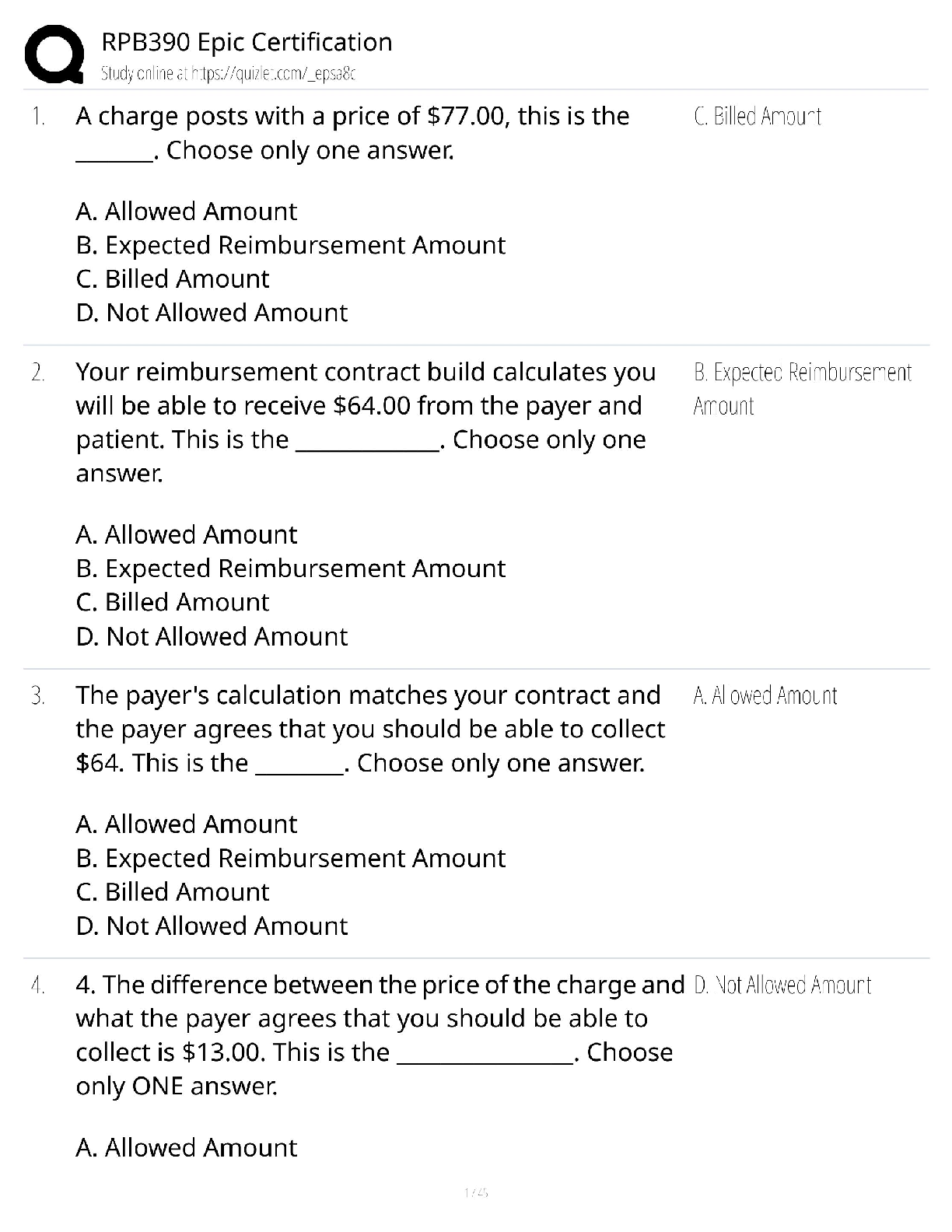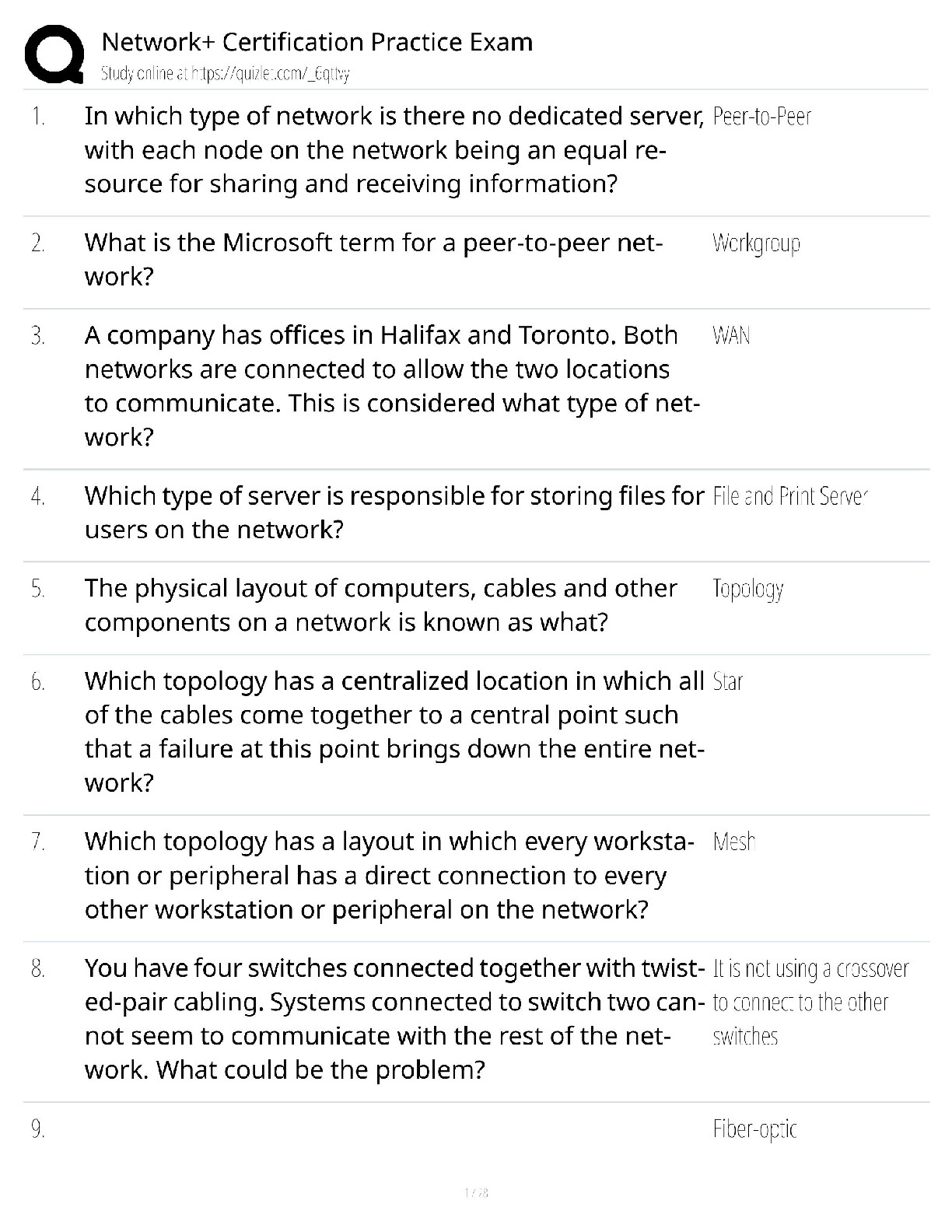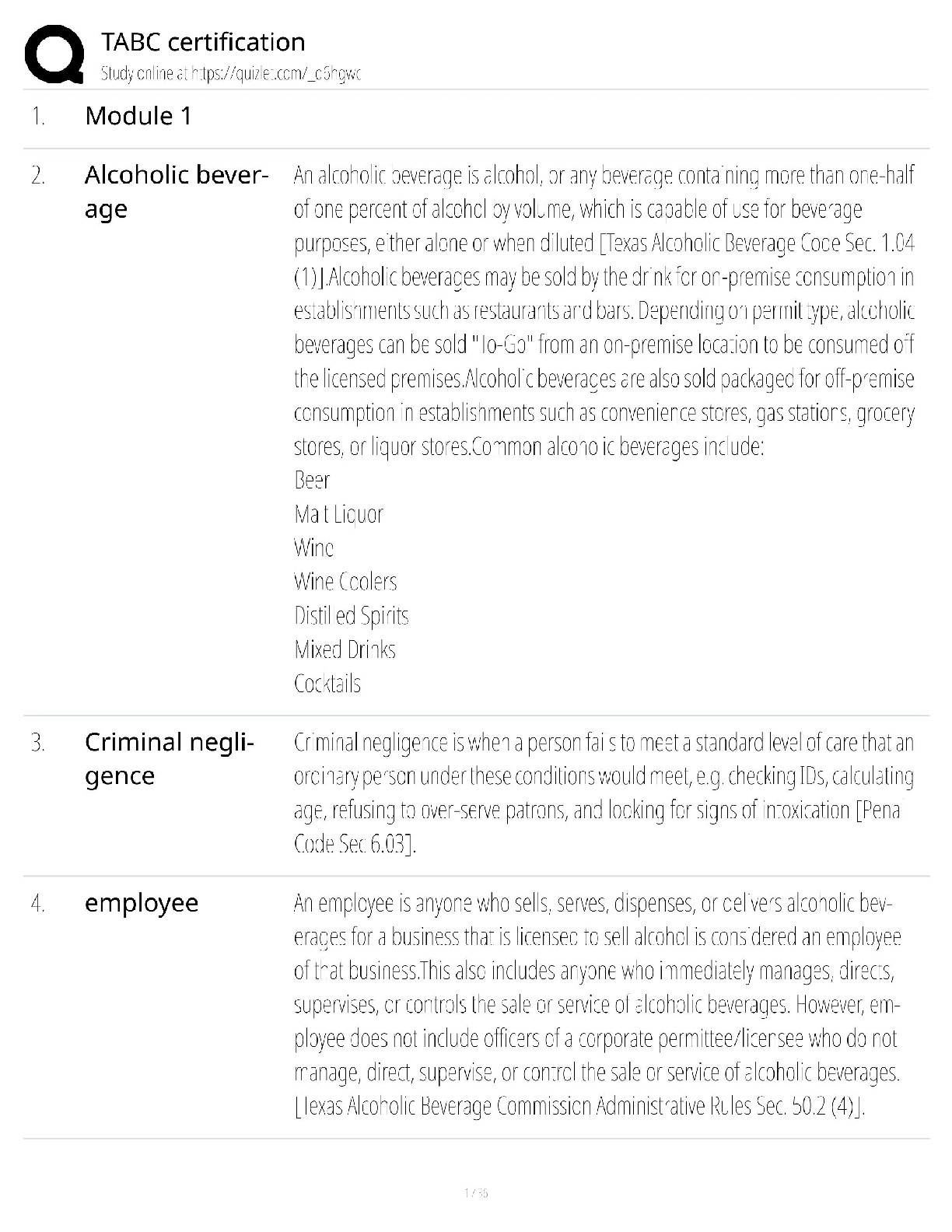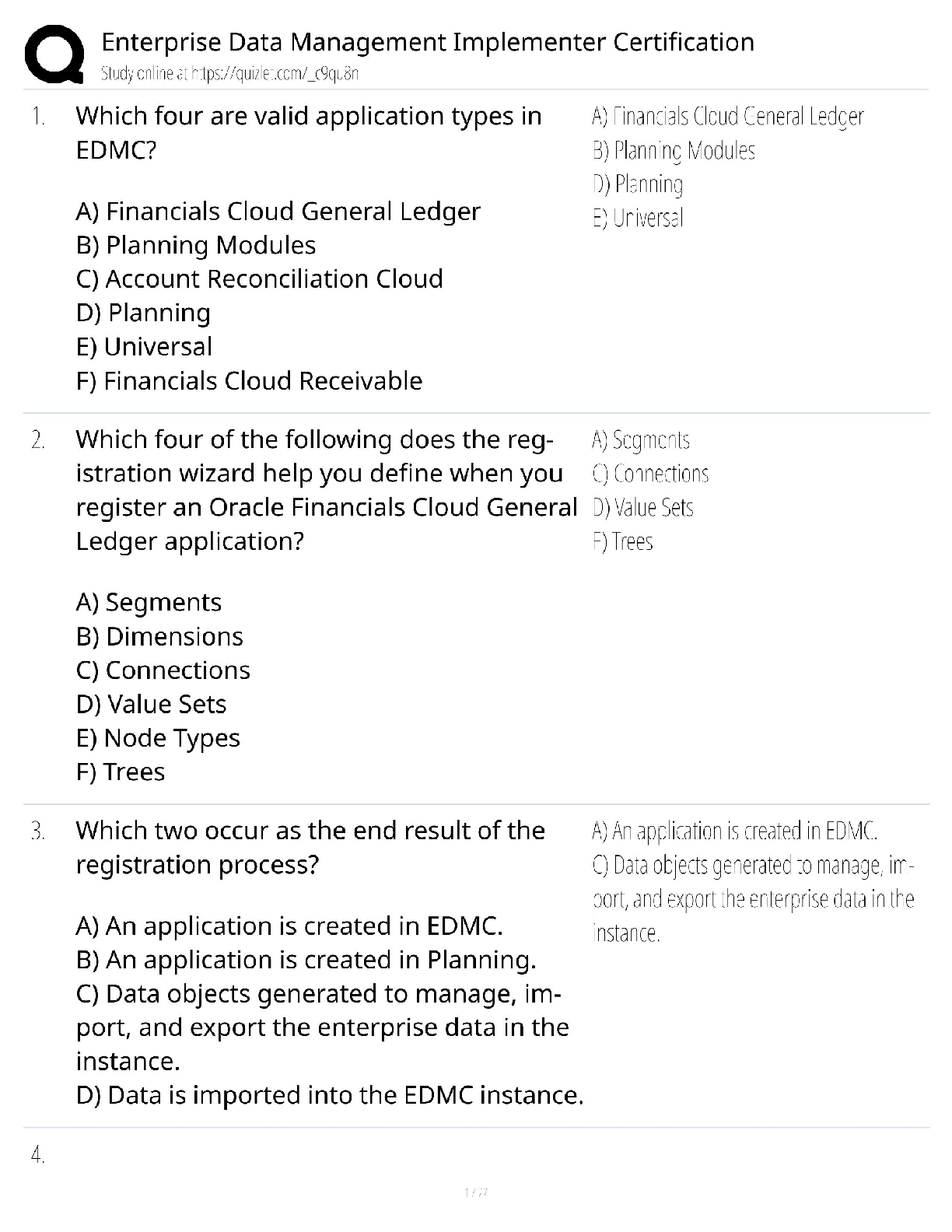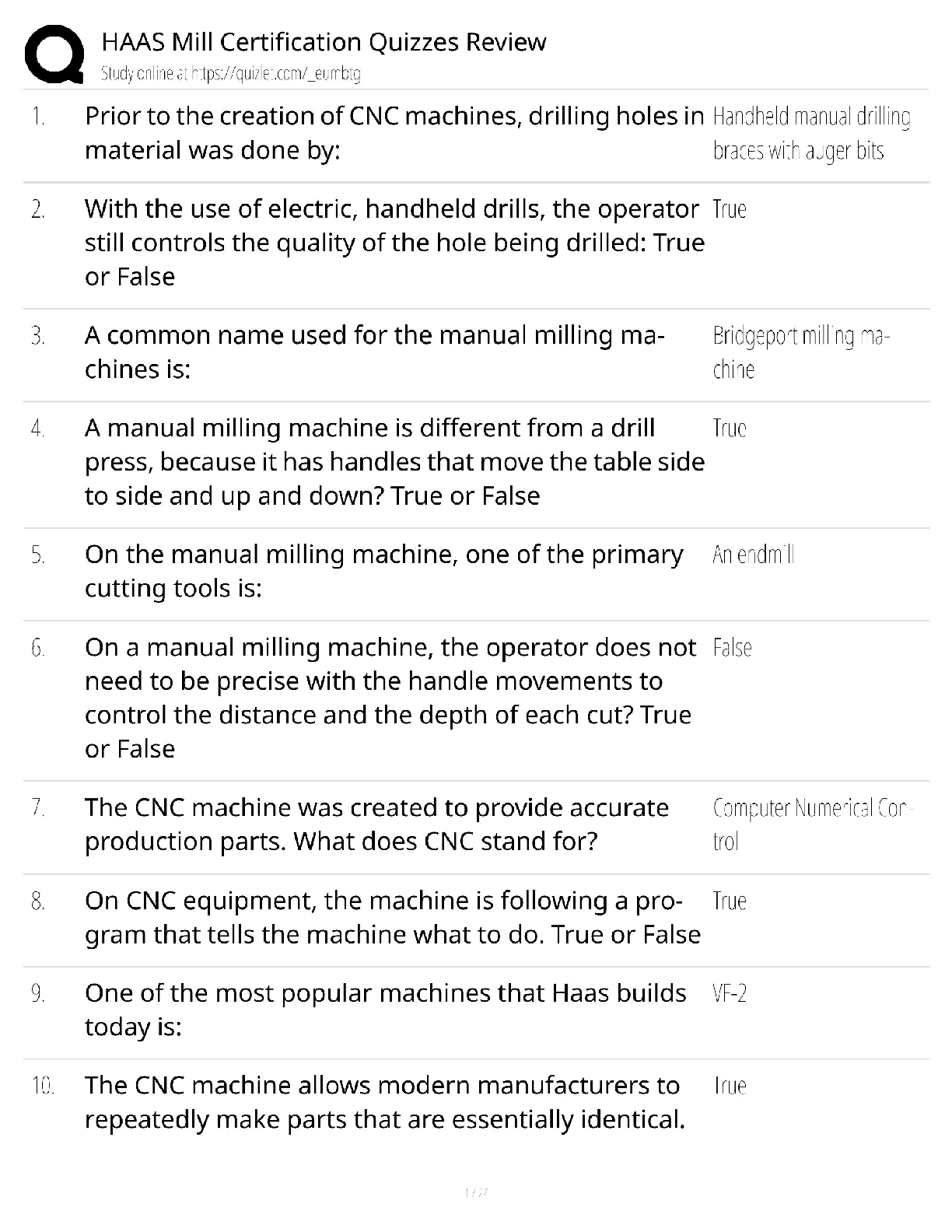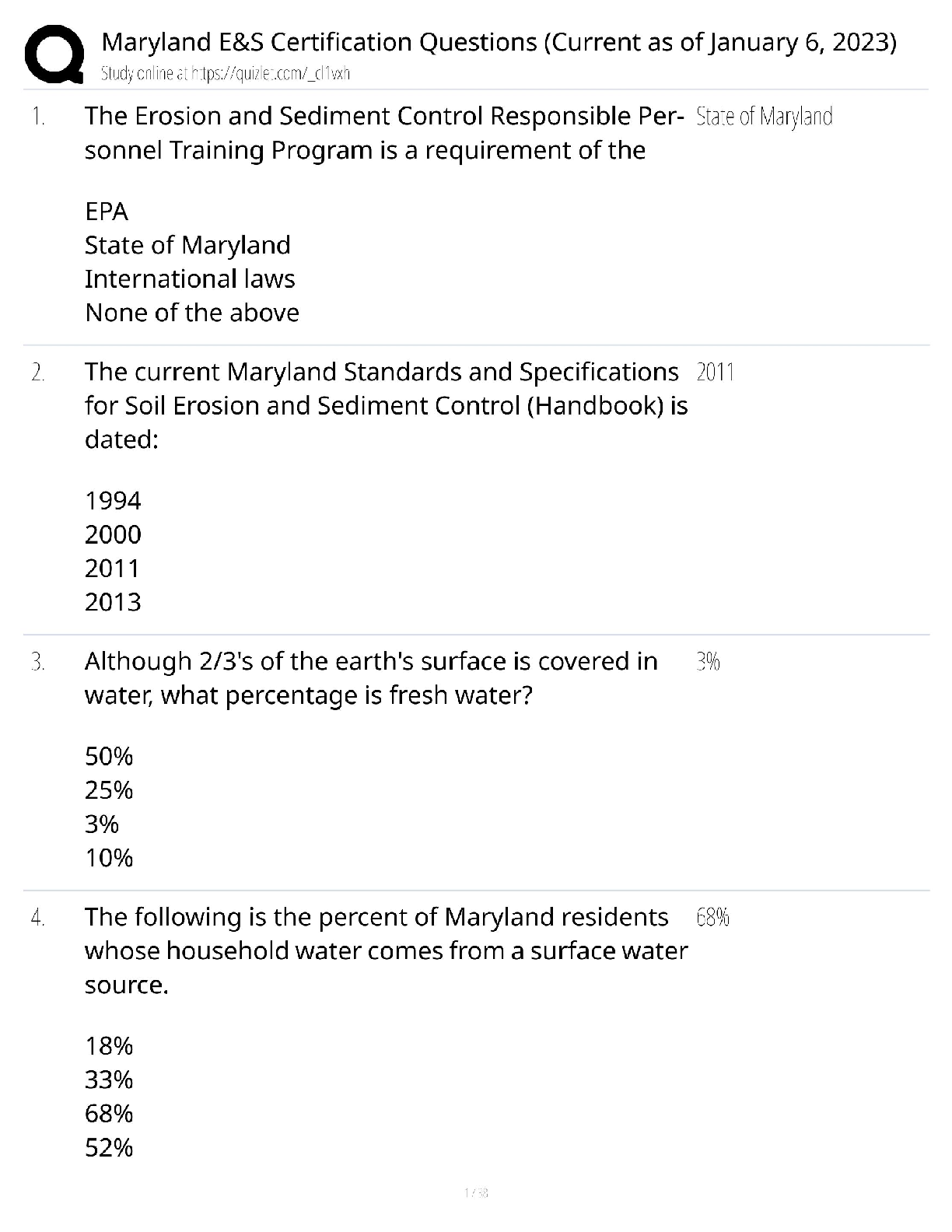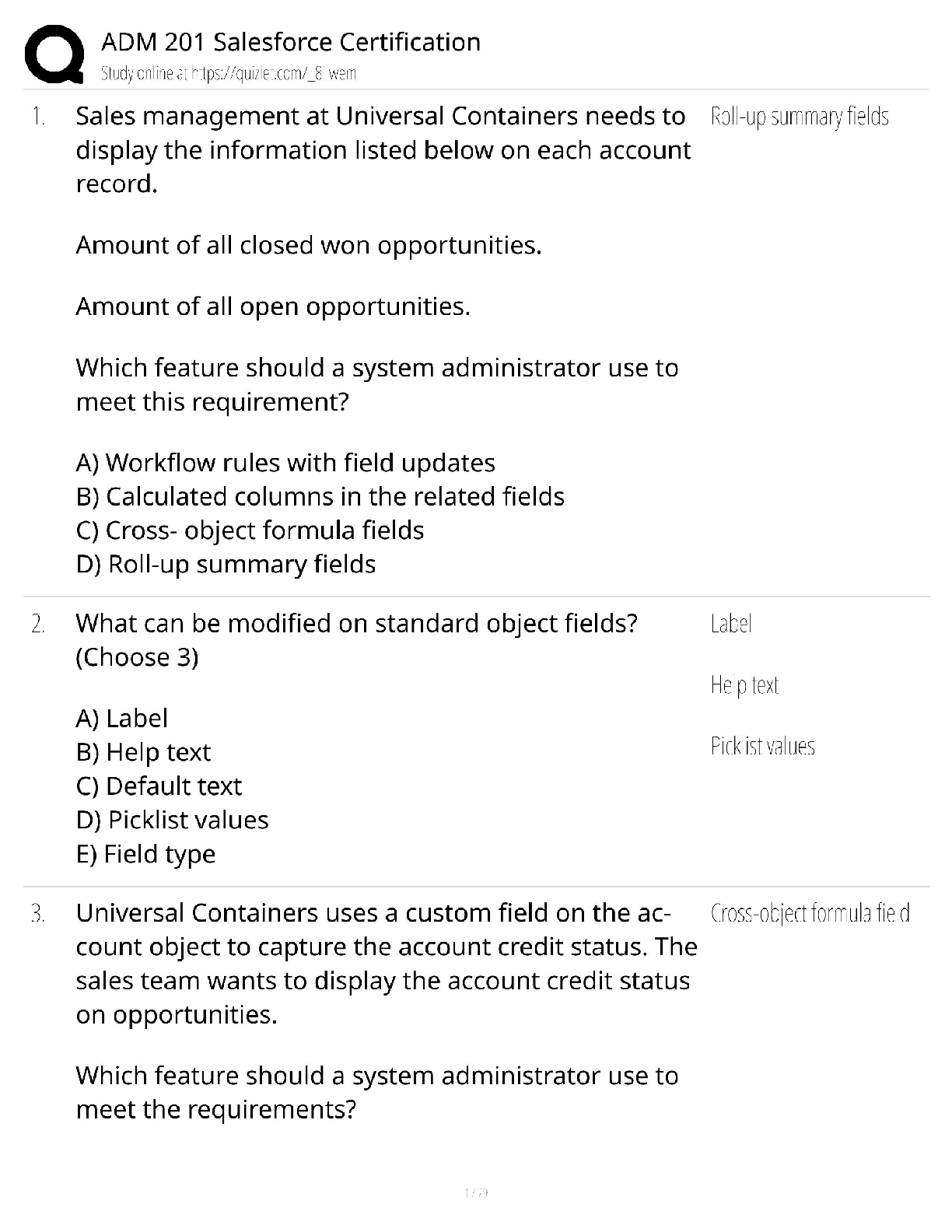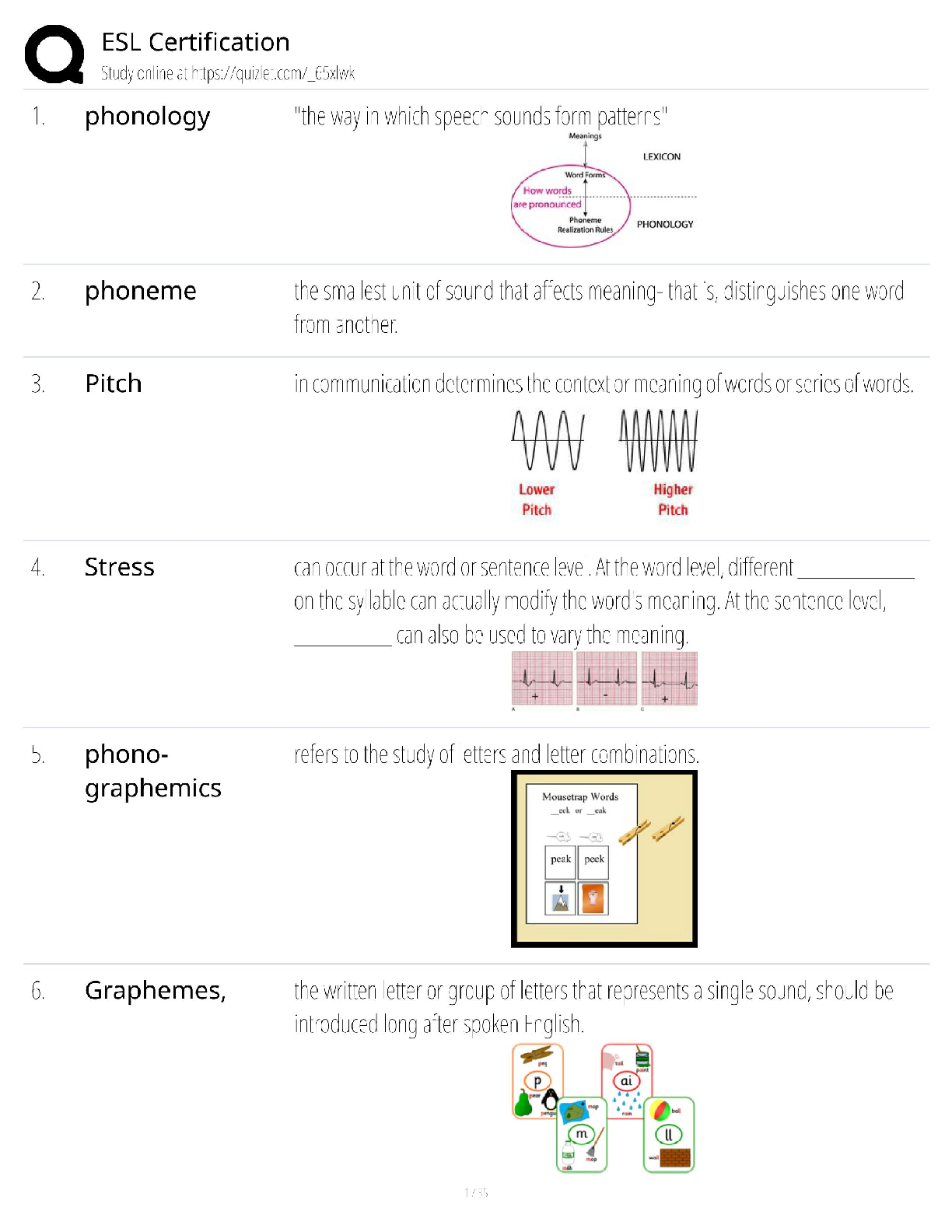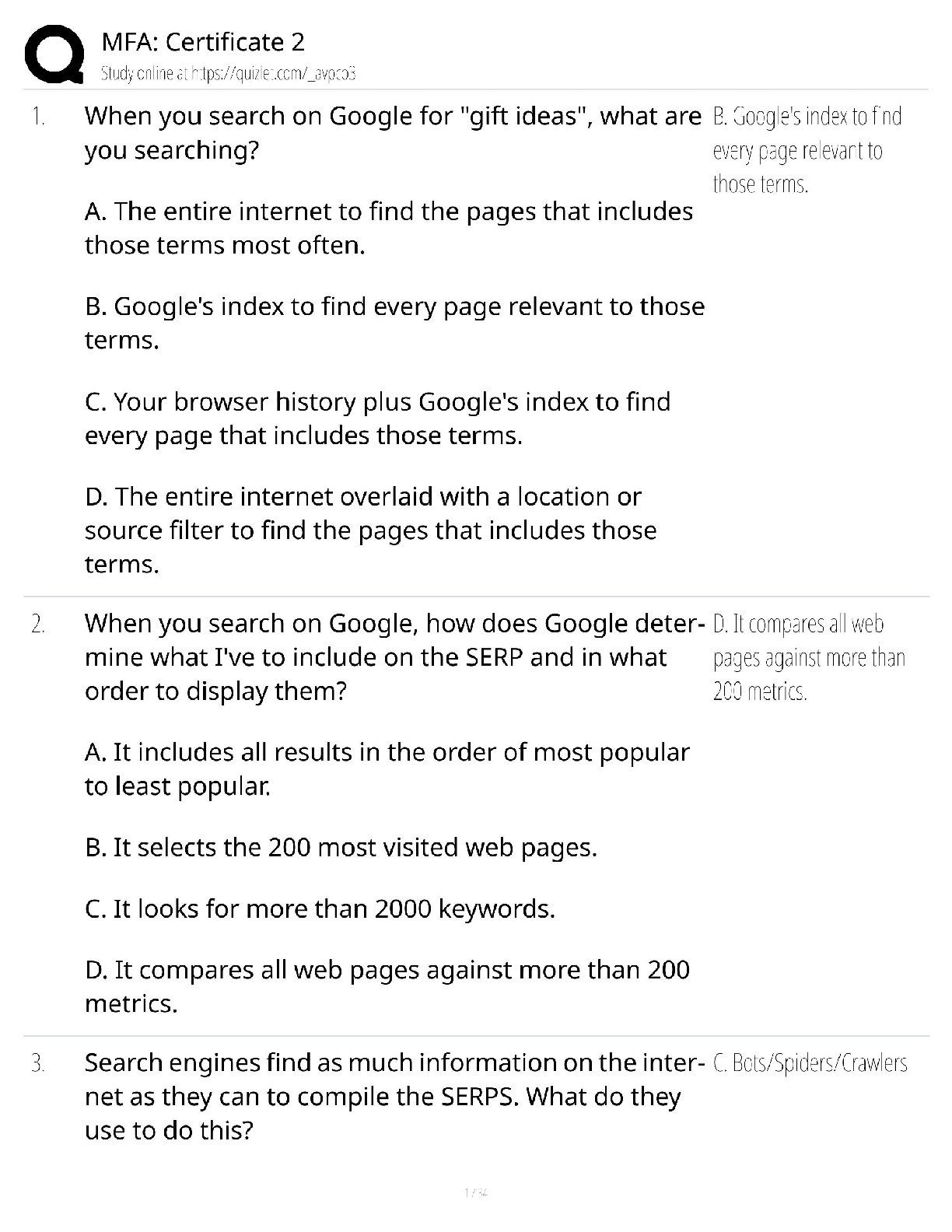Psychology > QUESTIONS & ANSWERS > PPR, PPR Texes 160, TExES PPR Concepts and Terms, Combined with Complete Solution (All)
PPR, PPR Texes 160, TExES PPR Concepts and Terms, Combined with Complete Solution
Document Content and Description Below
PPR, PPR Texes 160, TExES PPR Concepts and Terms, Combined with Complete Solution Piaget's Theory of Cognitive Development -Answer- Jean Piaget, a Swiss psychologist, developed a theory of how cogn ... ition develops and changes over time. Four Stages of Piaget's Theory of Cognitive Development -Answer- Piaget proposed that a child's intellect progresses through four stages: 1) Sensorimotor (0-2) 2) Preoperational (2-7) 3) Concrete operational (7-11) 4) Formal operational (11-adulthood) How does Piaget think kids learn? -Answer- Children learn through active interaction and manipulation of the environment. What do Piaget's stages mean? -Answer- The stage the child is in determines how they see the world. Piaget believed that all students pass through the stages in order and cannot skip any stage. Schemes -Answer- Mental patterns that guide behavior; cognitive structures that help children process and organize information to make sense of the environment. Assimilation -Answer- Understanding new experiences in terms of existing schemes. Accommodation -Answer- Modifying existing schemes to fit new situations in the environment. Adaptation -Answer- The process of adjusting schemes in response to the environment through assimilation or accommodation. According to Piaget, this is how learning occurs. Equilibration -Answer- The process of restoring balance between present understanding and new experiences. According to Piaget, learning depends on this process so it is important for teachers to confront students with new experiences or data to advance their cognitive development. Disequilibrium -Answer- An imbalance between what a child understands and what the child encounters through new experiences. Sensorimotor Stage -Answer- The earliest stage (0-2) of cognitive development during which infants learn about the environment by using their senses and motor skills. Children develop object permanence and progress from reflexive behavior to goal-directed behavior. Object Permanence -Answer- The fact that objects are physically stable and exist even when the objects are not in the child's physical presence. This enables the child to start using symbols to represent things in their minds so they can think about them. Preoperational Stage -Answer- The second stage (2-7) of cognitive development in which children learn to represent things in their mind. During this stage students develop the ability to use symbols to represent objects in the world. Thinking remains egocentric and centered. Egocentric -Answer- Believing that everyone sees the world as you do. Conservation -Answer- The concept that certain properties of an object remain the same regardless of changes in other properties. Centration -Answer- Paying attention to only one aspect of an object or situation; what is commonly called tunnel vision. Reversibility -Answer- The ability to perform a mental operation and then reverse thinking to return to the starting point. Class Inclusion -Answer- The ability to think simultaneously about a whole class of objects and about relationships among subordinate classes; a framework for thinking. Concrete Operational Stage -Answer- The third stage (7-11) of cognitive development in which children develop the capacity for logical reasoning and understanding of conservation but can use skills only in dealing with familiar situations. New abilities include operations that are reversible. Thinking is decentered, allowing them to understand that others may have different perceptions, and problem solving is less restricted by egocentrism. Abstract thinking is not possible. Formal Operational -Answer- The fourth stage of cognitive development (11-adulthood) in which abstract and symbolic thought is possible. Problems can be solved through the use of experimentation and critical thinking. Inferred Reality -Answer- The ability to understand stimuli in the context of relevant information. Preschoolers see what they see with little ability to infer the meaning behind what they see. Students in the concrete operational stage respond to inferred reality and see things in the context of other meanings. Seriation -Answer- Arranging objects in sequential order according to one aspect. Seriation involves arranging things in a logical progression. Transivity -Answer- A skill learned during the concrete operational stage in which children can mentally arrange and compare objects. Inversion -Answer- A mental transformation that requires reversible thinking. Reciprocity -Answer- A mental transformation that requires reversible thinking. Vygotsky -Answer- Lev Vygotsky, a Russian psychologist, developed a theory of cognitive development based on two key ideas. Vygotsky's Theory of Cognitive Development -Answer- He proposed children understand the world based on social interactions within their culture and the sign systems that represent ideas. Self-regulation -Answer- According to Vygotsky's theory, self-regulation is the ability to think and solve problems without the help of others. Sign Systems -Answer- Symbols that cultures create to help people think, solve problems, and communicate. Private Speech -Answer- Inner speech or children's self-talk that guides thinking and actions. Zone of Proximal Development -Answer- Level of development immediately above a student's present level. The tasks within the zone of proximal development require assistance from the teacher or a more knowledgeable other. Scaffolding -Answer- Support for learning and problem solving that include clues, reminders, examples, or encouragement. Cooperative Learning -Answer- Strategies in which students work together to help one another learn by sharing perspectives and providing models of slightly advanced thinking. Developmentally Appropriate Education -Answer- Instruction intentionally adapted to the current developmental level of students rather than planned according their chronological age or grade level. Psychosocial Theory -Answer- A set of principles that relates social environment to psychological development. Erikson's Theory of Psychosocial Development -Answer- Trained by Freud as a psychoanalyst, Erikson proposed people pass through eight psychosocial stages of development. A psychosocial crisis is resolved at each stage. Piaget's Theory of Moral Development -Answer- Piaget proposed that as children's thinking becomes more advanced their understanding of moral problems deepens. Heteronomous Morality -Answer- According to Piaget's theory of moral development, the younger stage when children think rules are unchangeable and that breaking rules leads to punishment. Autonomous Morality -Answer- According to Piaget's theory of moral development, the older stage when children understand that rules are created and that punishments are not automatic. Kohlberg's Stages of Moral Reasoning -Answer- Lawrence Kohlberg proposed students pass through three levels and six stages of moral reasoning. Preconventional Level of Morality -Answer- Stages 1 and 2 of Kohlberg's model of moral reasoning in which children make moral decisions in their own interests to avoid punishments. Safety is the main consideration. Conventional Level of Morality -Answer- Stages 3 and 4 of Kohlberg's model of moral reasoning during which children make moral decisions in consideration of others. Fairness is the main consideration. Postconventional Level of Morality -Answer- Stages 5 and 6 of Kohlberg's model of moral reasoning in which students define their own values in terms of ethical principles. Ethical behavior is a decision of conscience according to self-chosen principles and laws can be changed for the good of society. Socioeconomic Status (SES) -Answer- Social class defined in terms of income, occupation, education, possessions, and prestige in society. A measure of prestige within a social group. Ethnicity -Answer- A shared cultural heritage and traditions often based on race, religion, language, or national identity. Bilingual Education -Answer- Instructional programs for students who speak little or no English in which instruction is provided in the native language as well as English. Four types of Bilingual Education -Answer- language immersion; transitional; paired bilingual; and two-way bilingual Limited English Proficient (LEP) -Answer- A student who possesses limited mastery of the English language affecting instruction and learning. English as a Second Language (ESL) -Answer- Instruction program for students who are not native speakers of English in which all instruction is provided in English. Multicultural Education -Answer- An educational approach designed to improve outcomes for all students of different cultural backgrounds and genders. Individuals with Disabilities Education Act (IDEA) -Answer- A special education law that requires schools to educate students with disabilities in least restrictive environments to the greatest extent of their abilities using plans tailored to the individual needs of the students. Individualized Education Program (IEP) -Answer- A customized plan for a student with a disability developed by an ARD committee that guides the instruction and services the student receives. Least Restrictive Environment (LRE) -Answer- Provision in IDEA that requires students with disabilities to be educated with non-disabled peers to the maximum extent appropriate. Admission Review and Dismissal (ARD) -Answer- A committee composed of the parent, administrator, assessment personnel, regular education teacher, special education teacher, and other pertinent representatives who meet on a regular basis to make decisions in regard to admission, services, and dismissal from special education. Inclusion -Answer- An instructional arrangement whereby students with disabilities receive instruction and services in a general education setting with regular education peers. Gifted and Talented (GT) -Answer- Instructional programs designed for students with exceptional intellectual ability, creativity, or talent. Learning Styles -Answer- A theory of individual learner preferences proposed by Dunn & Dunn addressing environmental factors. Multiple Intelligences -Answer- An intelligence theory developed by Howard Gardner that changes the question from "How smart are you?" to "How are you smart?" The Eight Intelligences -Answer- 1) interpersonal 2) intrapersonal 3) musical-linguistic 4) spatial 5) logical mathematical 6) bodily-kinesthetic 7) linguistic 8) naturalist Direct Instruction -Answer- An instructional approach in which the teacher transmits information through goal-oriented, structured lessons. The seven parts to a direct instruction lesson -Answer- 1) State learning objectives 2) Review prerequisites 3) Present new material [Show More]
Last updated: 3 years ago
Preview 1 out of 34 pages

Buy this document to get the full access instantly
Instant Download Access after purchase
Buy NowInstant download
We Accept:

Reviews( 0 )
$12.00
Can't find what you want? Try our AI powered Search
Document information
Connected school, study & course
About the document
Uploaded On
Sep 12, 2022
Number of pages
34
Written in
All
Additional information
This document has been written for:
Uploaded
Sep 12, 2022
Downloads
0
Views
179


